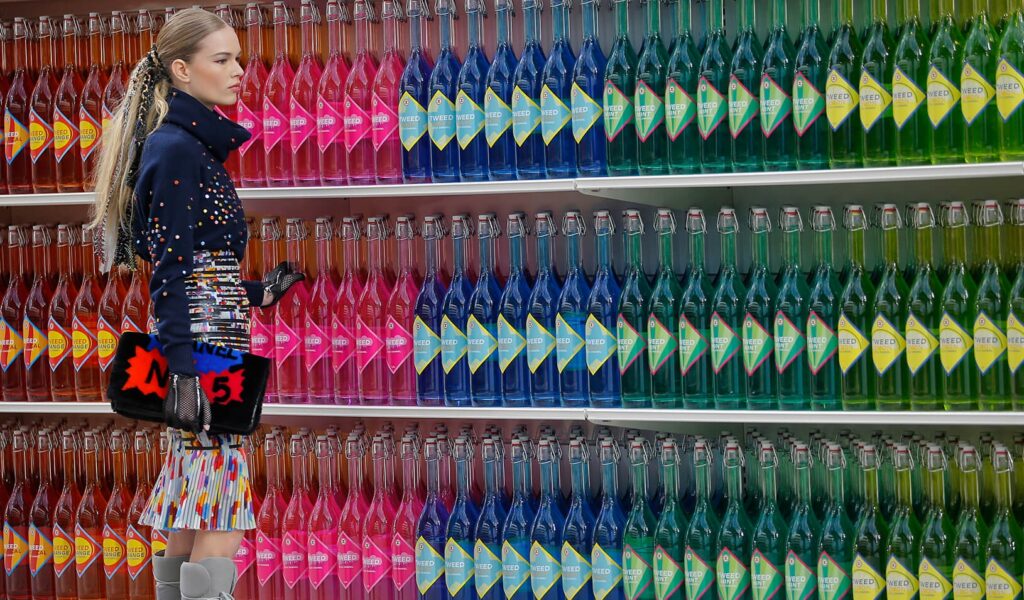
“Meet Julia. Julia is a 25-35 y.o. woman, she identifies as perfectionist, striving to be the best in all expressions of her personal and professional life. She is ambitious and wants the very best. She is on top of her game at work, she is a lives a hectic life, she desires…”
For years my colleagues and I have been writing briefs describing “the consumer”, the profile of a fictional person who is supposed to represent the core of who will eventually be buying our product, a person who meets the criteria of the consumer the brand wants to primarily attract.
It is a valuable tool for the creative, npd, communications teams to be able to decode what motivates this person, what the inner thoughts and aspirations are.
Endless hours have been spent discussing if pantone colour #534b3f or #4e463c (see figure below), a flip top or a screw top, a plastic or a metallic bag would represent Julia’s values and expectations and would make Julia want to buy our product over the competitor’s.

And while all these steps are important, this is clearly an oversimplification used to highlight one aspect of the process.
In this section I will discuss the issues arising from the current briefing practice, what we can do to better connect with our consumers and what is a more suitable, alternative way of briefing.
THE ISSUE
1. What is wrong with the current brief?
When we are putting together a brief, every little detail matters but we sometimes get so caught up in these details that we fail to see the bigger picture· and the bigger picture is this:
We are all complex creatures and there are 2 issues at play.
a. Irrationality
Our behaviour is very much influenced by our subconscious and our decisions are determined by it. There are countless studies done around this and equally many books written on the subject.
In fact, most decisions have already been made before we even stand in front of the shelf.
The moment we reach out to grab a product is when our brain makes up a reasoning that sounds rational and makes us feel in control about our decision but this process has been completed long before we set foot in a store.
Case Study: I worked on a project for building the right in-store environment for the hair colouration category.
This is a tricky category as it requires for the consumer to make a longer-term commitment that can really enhance (or ruin) their looks. It is also a highly emotional commitment as women are generally very attached to their hair (same goes for the hair!) and are very reluctant to make changes on their own without the help of a professional. It is also a change they seek to make to uplift their mood (e.g. after a break up) or to manage their primordial fear of death (first white hair). Add to the mix that there are numerous colour variations, it makes it tricky to help the consumer pick up the right product for their needs. There are probably about 400-500 variants to choose from and if one eliminates the obvious ones they are not interested in, they still end up with about 10-15 potentially suitable variants.
The store manager, the category manager and I went to the colouration section of the department store and sat for about 20 mins watching a consumer pacing back and forth between brands, with hair samples at hand, trying to find the right variant for her. We could see the frustration and stress level rising when eventually she gave up and went to the table where all the colours under promotion could be found.
In the case study above, we had to dig deep into the research to understand what would make a consumer dye her own hair and what we could do to facilitate and influence her decision.
What came out was astonishing (and expected). From the moment the consumer feels the need to make a change to the moment of truth in front of the shelf (or the website), there were at least 15 points of interaction that influence their decision.
The bigger the decision, the more points of interaction and the revisiting of the points of interaction before the final decision.
In the case of colouration, the consumer started with their hair dresser (the expert advice), the friends (the emotional confirmation), media, online (the aspiration), back to the hair dresser, picture search of celebrities/friends with the desired result, back to the friends for confirmation and so on.
15 interactions! Imagine if one is buying a car, or food for their family, furniture, detergent for their living space and so on.
Now imagine a matrix containing the daily decisions made (after a quick and dirty search the number tossed around online is 35,000) and the number of messages each of us is exposed to (another scientific a.k.a. google search showed about 5,000) and see if it is even possible to keep up.
Analytical and rational decision making requires a lot of brain power and seeing that people make thousands of decisions every day, the brain starts cutting corners or relies on intuition to sort through.
Companies who can afford to, usually resort in repeating the message as often and as loudly as possible by investing heavily in A&P.
Is that enough? What about the smaller brands, the rising stars who cannot afford to pay top influencers, be present in all platforms and so on? More about communication coming up.
b. We are all target groups
“Meet Barbara. She is 35-40, mother of two young girls. Because of them, she likes to claim that the future of the planet is amongst her top concerns when discussing in social circles.
She recently bought an electric car to do her bit for this cause.
Barbara’s family does not recycle because the recycling bin is too far from their home -they need to drive 2 blocks to carry everything and there is never any time to do so.
She tells her children it is important to recycle and that cars pollute.
Barbara also loves shopping. She is a perfectionist so she invests in top brands, but she also loves going into fast fashion stores and look for great deals.
She has read somewhere about the increased demand fast fashion puts on natural resources such as water and agriculture as well as the waste it creates (dyes, pesticides), but she does not remember much about it.
She buys super fancy hand soap for the guest bathroom (but refills it with the bag refills from the super market) and a super market brand for the master bathroom.
She wants to look great too. She loves having a natural look but has started using Botox and invests in expensive creams that her friends have recommended or have seen in magazines – the high price and lush packaging are indicators of the product’s efficacy.
Barbara’s family spend their holidays in sunny destinations where she loves sitting by the pool topping up her tan…”
This is a far more realistic representation of a consumer than what we marketers have been briefing for years.
Consumers are full of contradictions between what they think themselves, communicate to others and actually do when no one is watching.
Do you want to find out how to connect with the consumer? Click here!
Do you want to skip to the end and find out how to write the perfect brief & key takeaways? Click here!
Some inspiration came from here:
https://raywilliams.ca/neuroscience-can-help-us-make-better-decisions/https://www.adrenalineagency.com/blog/brand-messaging-and-5000-myth/
Check out: Barking up the wrong tree the bestseller book written by Eric Barker, www.bakadesuyo.com
Subliminal, How your Unconscious Mind Rules Your Behaviour by Leonard Mlodinow